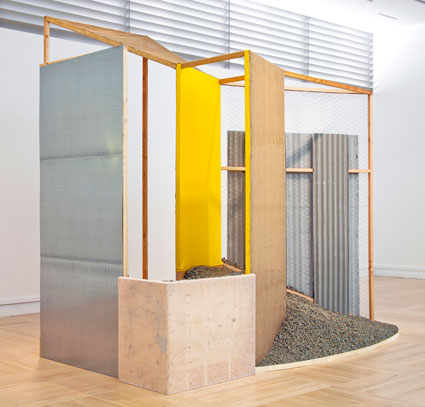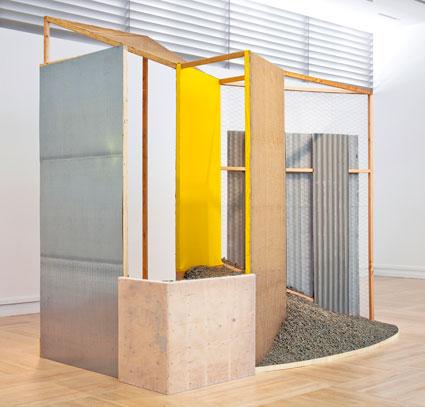Hélio Oiticica is one of the most important Brazilian artists of his generation. In the 1950s, he was part of the Grupo Frente, a circle of abstract artists whose work was based on European constructivist movements. He later joined the short-lived neo-concrete movement in Rio de Janeiro, which emphasized the value of experiencing a work of art over artistic theory—a subject that Oiticica continued to explore throughout his career. Profoundly interested in color and space, in the 1960s he invented his series of penetrables, chromatic and dynamic environments meant to be experienced by the viewer who penetrates them. After moving to a favela (slum) in Rio de Janeiro in 1964, where he became a lead samba dancer, Oiticica made ephemeral three-dimensional installations based on the housing of those communities. These architecturally scaled structures are intended to be traversed bodily and experienced by all the senses.

Hélio Oiticica, "Nas quebradas," 1979, purchased with funds provided by the Modern and Contemporary Art Council, JoAnn Busuttil, the American Art Deaccession Fund, and anonymous donors
In 2004 I traveled with former contemporary art curator Lynn Zelevansky to Brazil. One of our main priorities during the trip was to acquire a group of works by Oiticica for the collection. We spent several days with the Oiticica estate looking at a selection of works—an exhilarating experience. During the trip we acquired Nas quebradas, which at the time consisted only of a set of instructions outlined by Oiticica on how to build the work, all neatly packed in an envelope that we brought back with us to the museum. Nas quebradas was first installed by Oiticica in 1979—it is one of a few large-scale projects that he was able to construct before his untimely death in 1980. This past week, with the help of the estate, we rebuilt Oiticica’s penetrable. The work is made of the same cheap materials of the hundreds of shanty town houses scattered throughout Rio: bricks, gravel, corrugated roofing, chicken wire, yellow vinyl, and burlap. Viewers are invited to walk into the piece and experience it. The work is mysterious as it twists and turns, intimidating in its use of unstable materials... and so undeniably beautiful.
Ilona Katzew, curator, Latin American art



